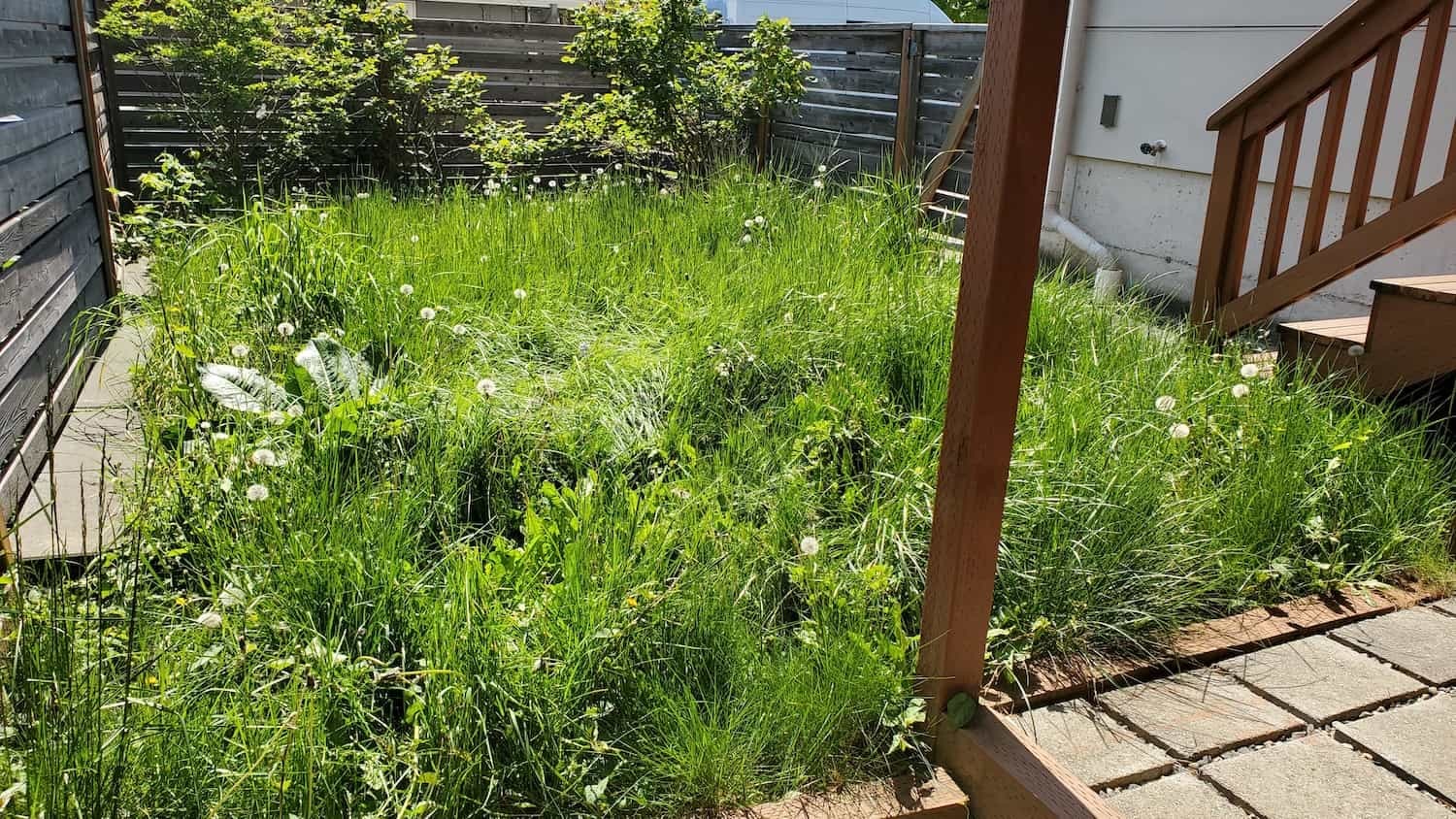Weeding Weed Around Pergolas
Homeowner’s Issue
Weeding yards face a familiar set of challenges: heavy winter rainfall, compacted glacial soils, shady corners, and slopes that funnel water toward foundations. Around pergolas, those factors combine with foot traffic and plantings to create perfect pockets for weeds, moss, and opportunistic ivy. Many yards in Weeding and nearby White Center and West Seattle are on gentle to moderate slopes where drainage is uneven; poor drainage keeps soil damp and encourages persistent grasses and sedges. Sun exposure varies widely from full-sun courtyard pergolas to deeply shaded structures under maples, so one-size-fits-all fixes rarely work.
Homeowners also juggle HOA curb-appeal rules, compact front yards, and the desire for low-maintenance solutions that don’t harm pets or pollinators. Typical issues include weeds pushing up through thin mulch, weed seeds washing into planting beds in heavy rains, and vines climbing pergola posts. Left unchecked, weeds increase pruning needs, hide tripping hazards, and make decks and paths slippery. For Weeding properties, the smart approach is to combine hand removal, improved soil surface management, and organic mulches or fabric barriers to reduce future growth while respecting the local microclimate and drainage patterns.
Our Quality Service
We focus on sustainable, practical weed control around pergolas tailored to Weeding yards. We start with a site assessment that considers slope, sun, soil compaction, and nearby plantings. All removal is done by hand or with manual tools—no synthetic herbicides—followed by soil conditioning and a mulch or fabric barrier where appropriate. We account for West Seattle and White Center microclimates when recommending mulch depth and drainage fixes.
Benefits:
- Safer, pet- and pollinator-friendly methods.
- Improved curb appeal and clearer sightlines around structures.
- Reduced long-term maintenance and fewer repeat visits.
- Better drainage and less moss buildup on pathways and decks.
What’s Included
- Hand-pulling and root removal around pergola bases and posts.
- Clearing debris, trimming nearby growth, and inspecting drainage.
- Applying organic mulch (as requested) to suppress regrowth.
- Light soil cultivation to reduce compaction and improve water flow.
- Edging and tidying of surrounding beds for clean presentation.
Optional upgrades:
- Mulch + landscape fabric installation for heavy weed pressure.
- Organic weed-control concentrates (non-synthetic) for touch-ups.
- Gravel or drainage channels to divert water on sloped sites.
- Planting low-maintenance groundcovers to reduce bare soil.
Before & After / Expectations
We’ll be clear about what to expect on service day: some noise from hand tools, temporary debris while we work, and the need for reasonable access to the pergola area. We remove green waste and offer haul-away or green-bin options.
Care tips for Weeding yards:
- Keep a 2–3” layer of organic mulch and replenish yearly.
- Remove seedlings promptly after rains before they set seed.
- Watch for moss in shaded, wet spots—improving surface drainage helps most.
- Avoid piling soil against pergola posts to prevent rot and weed refuge.
FAQs
- How long will service take? Most small-to-medium pergola areas take 1–3 hours; larger or slope-correcting jobs take longer.
- Do you use herbicides? No — we use hand-removal, mechanical tools, organic products, and mulch to prevent regrowth.
- Can you work around HOA rules? Yes — we’ll match plant choices and visible treatments to HOA guidelines.
- Is follow-up needed? Often yes—one or two follow-ups the first season keep beds settled and reduce long-term regrowth.
Call to Action
Weeding homeowners: book a free estimate for pergola weed control and sustainable yard care. Fast scheduling, reliable local crews, and results designed for our rainy Northwest climate make upkeep simple.
Email: neatandtidyseattle@gmail.com
Phone: 206-538-9344
Licensed • Bonded • Insured










